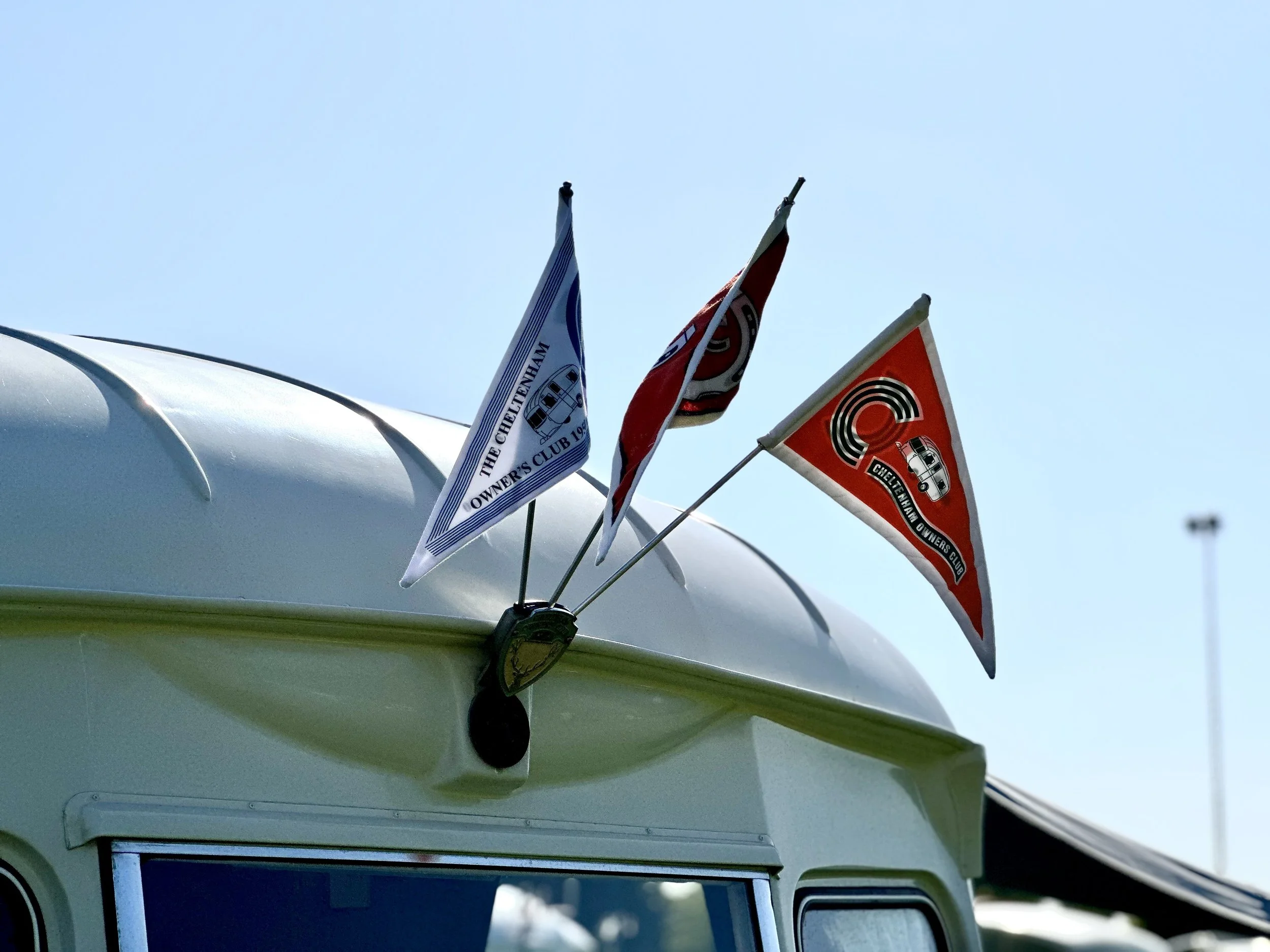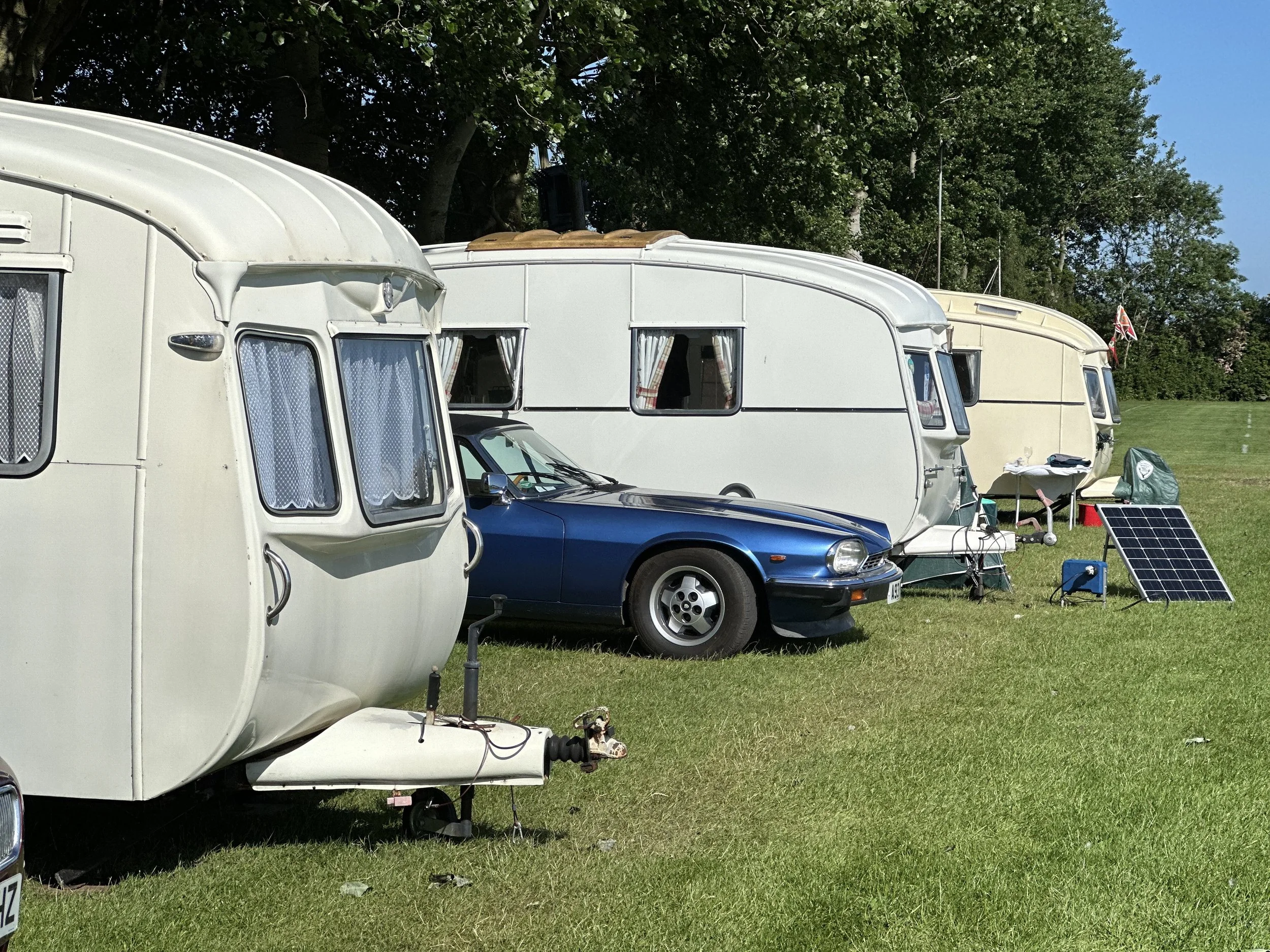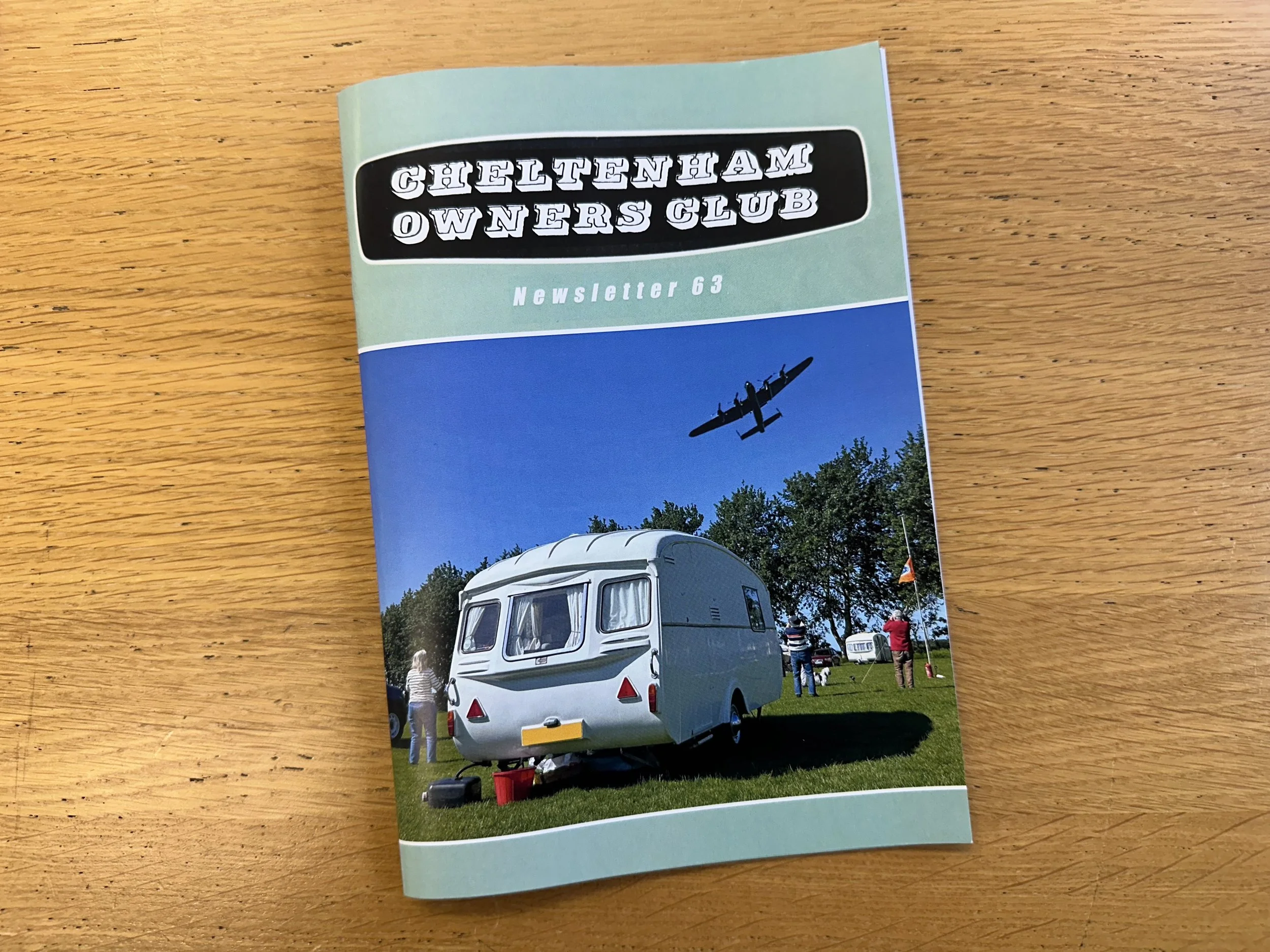How To Keep A Club Going
Owners Clubs are generally considered to be a bit of a dying breed in the 21st century. Decades of committees, club politics and fallings out have deterred younger people from joining clubs, despite all the good that clubs have done over the years. It’s rare that one will survive a couple of decades, usually once an established friendship circle at the top fizzles out, the clubs in question do the same. However, not all clubs conform to this pattern…
Back in 1950, the Cheltenham Owners Club was formed. Arthur Gardner had founded the Cheltenham Caravan Company in 1919, and steadily built up his business on a reputation of solidly-built caravans that could be designed to the owner’s requirements. As production kicked up a gear in the 1940s, interest in the brand was booming. Arthur and his wife Joy were avid caravanners themselves, and liked to get honest feedback from buyers to help improve their designs further. This lead to the formation of the Cheltenham Owners Club, where once a year the Gardners would invite Cheltenham owners to their farm for an annual gathering so that they could meet like-minded enthusiasts, hear news of the latest models and improvements, and the Gardners could get vital feedback from owners about their caravans.
The rally was a success, and 55 caravans attended. The Club was adopted officially and Arthur served as the President, but left it to the main Committee to organise events, making sure that they did not clash with established events run by the Caravan Club and the British Caravanners Club.
The Club peaked in 1970, with an unprecedented 570 Cheltenham caravans turning up for their 20th Anniversary. Unfortunately, for various reasons mainly concerning the impact of the 1973 Oil Crisis, the Cheltenham Caravan Company ceased trading in 1975. At this point, various members stepped in to ensure that the Club would survive, as strong friendships had been formed, and owners were keen to keep their Cheltenham models going. The Club co-ordinated with suppliers to keep lists of places that would repair and service Cheltenham caravans, in addition to stocking some spare parts to enable owners to keep them going, something that the Club very proactively still does to this day.
Through this sheer enthusiasm, the Cheltenham Caravan Company found a new owner in Fernden Caravans, and production re-started in late 1977. For the next four years, Cheltenham caravans continued to be produced, but now with modernised fittings and updated specifications whilst retaining the classic Cheltenham shape.
Sadly, the recession of 1980-82 forced them out of business for good. With no chance of a revival, Cheltenham Owners Club members John and Tina Bradley set up shop restoring and refurbishing Cheltenham models until their retirement in 2004. Owners could choose to keep their Cheltenham in its original condition, or choose various upgrades such as double glazing, central heating and hot water systems. Still, the Cheltenham Owners Club waged on.
The Cheltenham Owners Club hit a third bump in the road, when the founding family, the Gardners, decided to step back from running the Club in 1986. Again, the enthusiasm for the brand and the Club was so much, that the members stepped in again to re-form the committee and continue to run the Club. They continued to have support and blessings from the Gardners, but they “retired” to Presidential roles.
The Cheltenham Owners Club celebrated their 70th anniversary in 2020. Every year for 70 years they’d held at least four meetings and issued an annual newsletter. By now, the newsletter had evolved into a large 56-page magazine, edited by longstanding member Howard Evans, who’d completely revised and refreshed the magazine to help continue to breathe new life into the Club.
Howard tragically passed away following a short illness in 2023. He asked that I would oversee that the Cheltenham Owners Club didn’t lose its streak of newsletters, and that I would oversee the production of the magazine for 2023/2024. It was a mammoth task, compounded by not being able to locate Howard’s computer files and having to format the magazine from scratch. But I managed to complete it, but credit must be given to the members who flocked to send in articles, offer help with proof-reading and contributed photos. I may have physically put the magazine together, but it was a real team effort.
I don’t know if it’s testament to the design of the Cheltenham caravans themselves or the resilience of the owners who’ve kept a caravan brand going, thanks to their Owners Club, for longer than the original Cheltenham Caravan Company was a going concern in tandem with the Owners Club. Either way, it’s a remarkable feat that the Cheltenham Owners Club is now the longest-surviving single marque caravan Club in the world, even longer established than the infamous Wally Byam Caravan Club International (WBCCI) for Airstream caravans, which was founded five years after the Cheltenham Owners Club. Even more impressive when you consider that Airstream is still a prominent active manufacturer, whereas the last Cheltenham rolled off the line 43 years ago!
So in answer to how do you keep a Club going for nearly 75 years - the answer is the people. Without making the members feel that they are a respected and valued part of the team, you have a business rather than a Club. When members are willing to step in when things get tough, the Club is working as it should, despite the various obstacles that it may encounter along the way. We look forward to the 75th anniversary in 2025, which will be celebrated as we’ve always done - in our lovely Cheltenham caravans.
If you feel inspired after reading this article, you can become a member of the Cheltenham Owners Club for just £15 for the year HERE.




